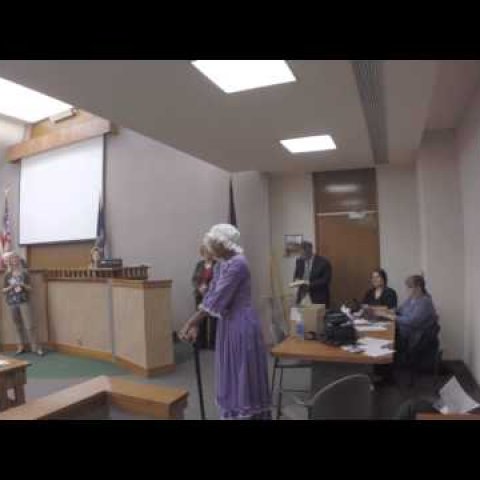Underground Railroad
The term "Underground Railroad" referred to a network of people who assisted slaves in their quest for freedom. The penalties for helping slaves escape their owners were very high and could include heavy fines, confiscation of their property or prison. As a result, the people involved were very secretive and even developed a special vocabulary to hide their activities.
All the terms referred to transportation by train. Unes were the routes taken by slaves who moved from one place to another. The homes, barns, cellars, inns and taverns that provided safety were called stations and the owners of these places were called station masters. Those who aided in the escape, and often by providing transportation, were known as conductors. Slaves were often referred to as freight, packages or passengers.
The stations were located between ten and fifteen miles of each other and slaves were able to rest, change clothes and eat at the various stops. Slave catchers were individuals who pursued slaves hoping to return them for a generous bounty. Punishments for returned slaves were often brutal to discourage other slaves from attempting to flee.
It is believed that tens of millions of slaves were transported from Africa, but only about fifteen million survived the journey. Abolitionists were people who believed that slavery should be abolished. Some Abolitionists became active in the Underground Railroad while others did not.
Slaves moved north while escaping using the North Star and "gourd" (Big Dipper) for guidance. Their eventual destination was Canada because of that country's humanitarian policies. After the American Revolution, British Loyalists moved to Canada and took their slaves with them. In 1793 a bill was passed that prevented bringing new slaves into Canada. During the 1820's thousands of slaves sought refuge in Upper Canada. In 1833, King William of Britain approved a bill that ended all slavery in Canada.
Helen C. Phelan in her work entitled "And Why Not Every Man?" gives an account of the Underground Railroad in the Southern Tier of New York. She outlines three routes across cattaraugus County. One began at Buckpond outside Olean where a Genesee Valley Canal Boat took "passengers" up the Ischua Creek to Isaac Searle. It then went to the Mead home in Cadiz and finally to Arcade.
Another route was to Olean, and then to Pleasant Valley and Judge Brooks. It continued on to Maplehurst and the Hatch place near Hinsdale and finally to the Mead House in Cadiz and then to Pleasant Valley and Judge Brooks. It continued on to Maplehurst and the Hatch Place near Hinsdale and finally to the Mead House in Cadiz and the stagecoach stop.
The third route took slaves down the Allegany River to Quaker Bridge. From there it went to Leon, Dayton, Perrysburg and Versailles where Eber Pettit was the conductor.
According to the late Reverend Irenaeus Herscher, OFM, former librarian at Saint Bonaventure University, the Mead home remained active as an Underground Station during the Civil War. He said, "Boats met the runaway slaves at Olean, taking them by boat to the Mead house in Cadiz where they were taken to Arcade on the way to Buffalo." This information was contained in a newspaper article found in the files of Ischua Valley Historical Society.
According to Phelan, other families involved in assisting slaves were Joseph Remington in Riceville (Ashford) since this was an alternate route rather than going to Arcade, the Hollis Scott house near Maplehurst Cemetery and the Burlingame home near Cadiz.
Alfred Rice was the Underground Railroad's last surviving Conductor in Western New York. His father had a tavern in Nichols Brook and the family would hide slaves in a tangle of wild cherry trees and vines. In an article, Rice's son relates that his father Alfred would hitch his wagon at dusk and head toward the hiding place of the slaves who had arrived in Franklinville. Cadiz is a small hamlet in the Town of Franklinville. They would lie in the bed of the wagon covered by hay or canvass during the three hour ride to East Aurora. Once slave catchers attacked his wagon at Protection but he was able to beat them off with his whip. Alfred Rice served in the Civil War and later devoted his life to farming and teaching. He died at the age of 90 in 1923. He gives testimony to the fact that Cattaraugus County had an active part in the Underground Railroad.
Information for this article was obtained through newspaper articles found in the files of the Ischua Valley Historical Society, the writing of Helen C. Phelan, The Center for the Study of Canada at SUNY Plattsburgh and internet websites.
Maggie Fredrickson - Village of Franklinville Historian and Curator of the Miner's Cabin Museum and the Howe-Prescott Pioneer House.

